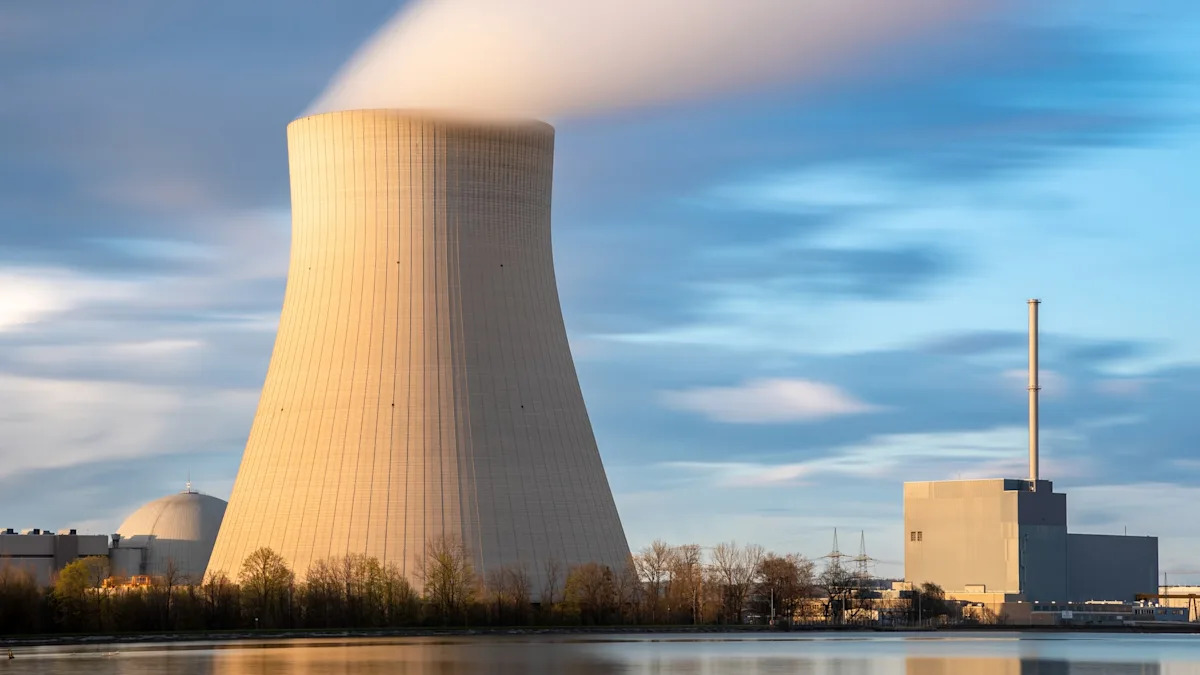Former engineers from SpaceX have established Radiant Nuclear, a company dedicated to revolutionizing the energy industry with its innovative small modular reactors (SMRs). The flagship reactor, known as the Kaleidos, is designed to generate approximately 1.2 megawatts of electricity, focusing on safety and efficiency. This development aims to provide a cleaner alternative to traditional diesel generators, particularly in commercial and military settings that lack access to a reliable power grid.
The founders, Doug Bernauer and Bob Urberger, bring their expertise from SpaceX to Radiant, where they are joined by a team of skilled professionals from both the energy and aerospace sectors. The Kaleidos reactor qualifies as a microreactor, a specific type of SMR capable of being installed in confined spaces such as warehouses and garages.
Innovative Design and Safety Features
One of the standout features of the Kaleidos reactor is its use of pressurized helium gas instead of water to drive turbines and cool the reactor core. This choice significantly reduces safety risks, as helium does not become radioactive in the event of a leak, unlike water-based systems. Furthermore, it minimizes the strain on local water supplies, allowing for greater flexibility in installation locations.
Nuclear fission, the process at the heart of this technology, involves splitting the nucleus of an atom to release large amounts of heat and radiation. While concerns about reactor safety persist due to historical incidents like Chernobyl and Fukushima Daiichi, industry experts assert that nuclear energy remains one of the safest options available when evaluated on a broader scale. The Kaleidos employs Tri-structural Isotropic (TRISO) fuel, which consists of uranium isotopes encapsulated in multiple layers of ceramic material, effectively mitigating the risk of meltdowns.
The reactor’s design also incorporates an air jacket system that passively cools the core through natural convection, streamlining the regulatory approval process. In addition to its electrical output, the Kaleidos can provide 1.9 megawatts of thermal energy, which can be utilized for facility heating or water desalination.
Future Testing and Potential Impact
Radiant Nuclear completed its front-end engineering and experiment design (FEEED) phase for the Kaleidos reactor in late 2022, positioning it for future testing. The reactor is set to undergo trials at the Idaho National Laboratory as part of the lab’s DOME microreactor test bed, with potential tests scheduled for mid-2026.
Radiant’s Chief Operating Officer, Tori Shivanandan, emphasized the significance of this milestone, stating, “Completing the FEEED phase is a major milestone leading to Radiant’s fueled reactor test at INL’s DOME facility.” The company has successfully secured its place on the lab’s qualified supplier list, completed numerous design reviews, and submitted a Conceptual Safety Design Report, all while adhering to timelines and budget constraints.
The Kaleidos reactor signifies a promising step towards integrating clean, reliable energy sources with existing renewable infrastructures such as solar and wind power. Its ability to generate electricity during the night complements the intermittent nature of renewable energy sources, potentially leading to lower energy costs, increased local job opportunities, and enhanced environmental benefits.
As the world seeks sustainable energy solutions, Radiant Nuclear’s innovations may play a crucial role in shaping the future energy landscape, offering a viable alternative to conventional power generation methods.
